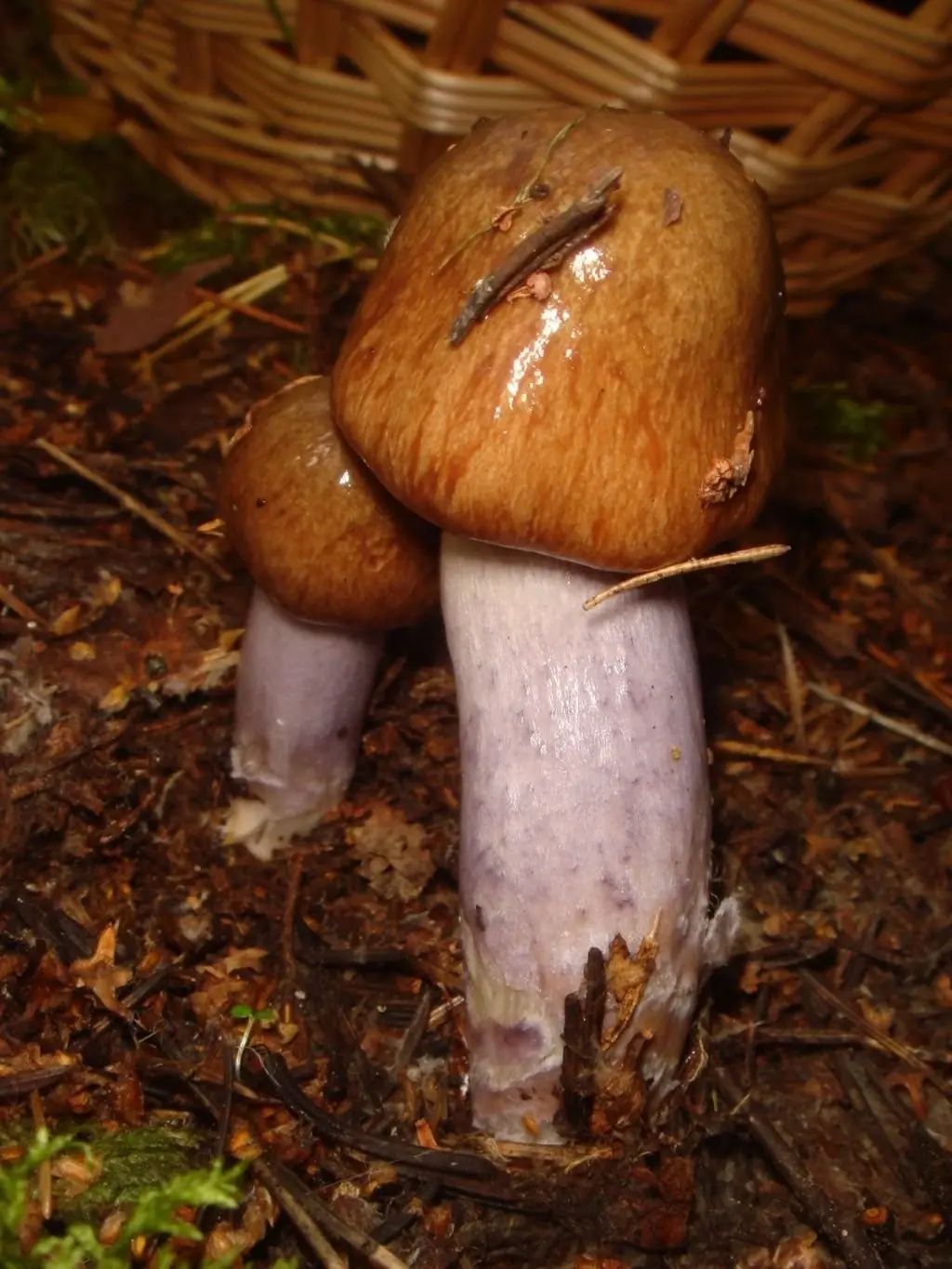Dirty cobweb (Cortinarius collinitus)
- Division: Basidiomycota (Basidiomycetes)
- Subdivision: Agaricomycotina (Agaricomycetes)
- Class: Agaricomycetes (Agaricomycetes)
- Subclass: Agaricomycetidae (Agaricomycetes)
- Order: Agaricales (Agaric or Lamellar)
- Family: Cortinariaceae (Spiderwebs)
- Genus: Cortinarius (Spiderweb)
- Type: Cortinarius collinitus (Soiling Cobweb)
- Blue-barreled cobweb
- Gossamer straight
- Cobweb oiled
 Description:
Description:
The spider web mushroom has a cap with a diameter of 4-8 (10) cm, at first broadly bell-shaped with a curved edge, tightly closed with a veil from below, then convex with a tubercle and with a lowered edge, later prostrate, sometimes with a wavy edge. The hat is slimy, sticky, smooth, almost shiny in dry weather, variable yellowish in color: first red-brown or ocher-brown with a dark, black-brown middle, then yellow-orange-brown, yellow-ocher with a darker red-brown middle , often with dark black-brown spots in the middle, fading to pale yellow or leathery yellow with an ocher center in dry weather
Plates of medium frequency, adherent with a tooth, first pale bluish or light ocher, then clayey and rusty-brown, brownish in dry weather. The cobweb cover is dense, slimy, pale bluish or whitish, clearly visible.
Spore powder brown
Leg 5-10 cm long and 1-2 cm in diameter, cylindrical, often straight, slightly narrowed towards the base, mucous, solid, then made, pale lilac or whitish above, brownish below, in rusty-brown torn belts
The pulp is dense, medium fleshy, without any special smell, whitish, creamy, brownish at the base of the stem.
Spread:
The soiling cobweb lives from the end of July to the end of September in deciduous and mixed (with aspen) forests, in aspen forests, in humid places, singly and in small groups, not often
Evaluation:
Cobweb staining – A good edible mushroom, used fresh (boil for about 15 minutes) in second courses, salted and pickled









